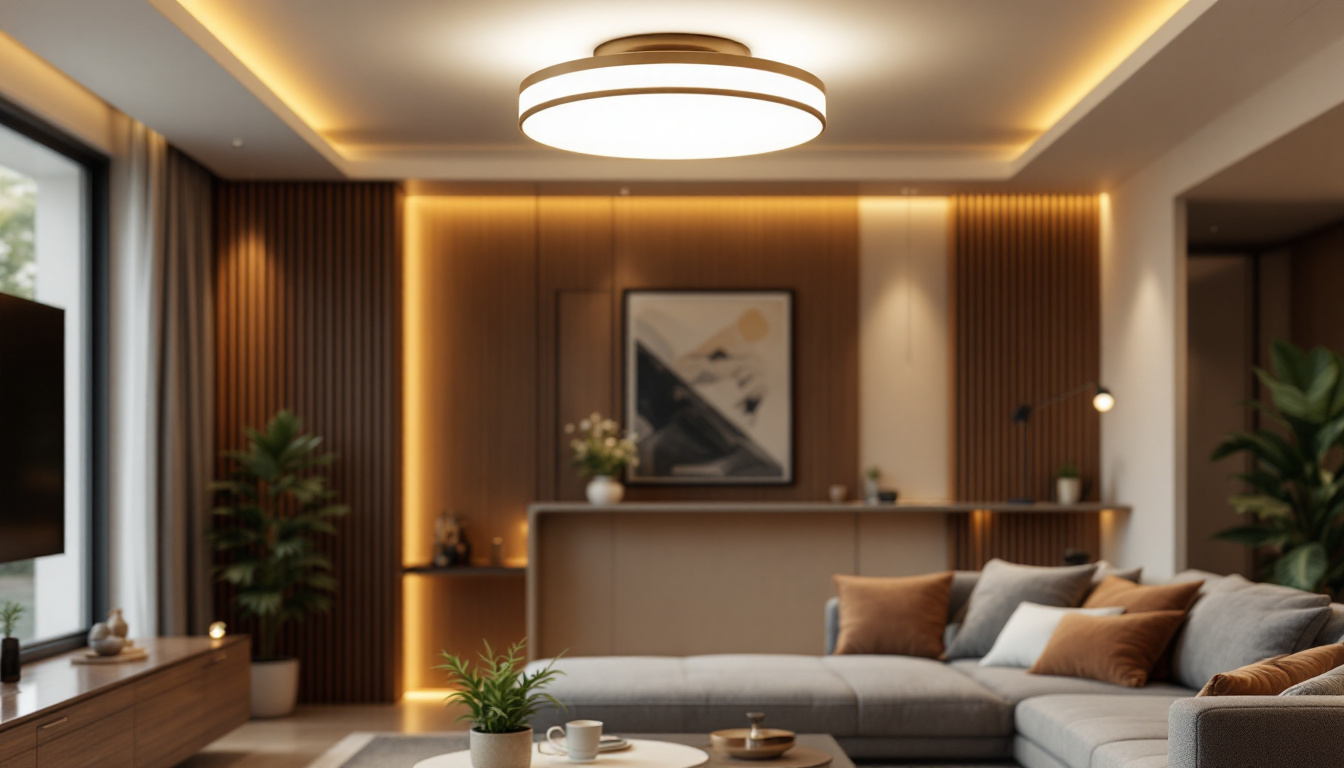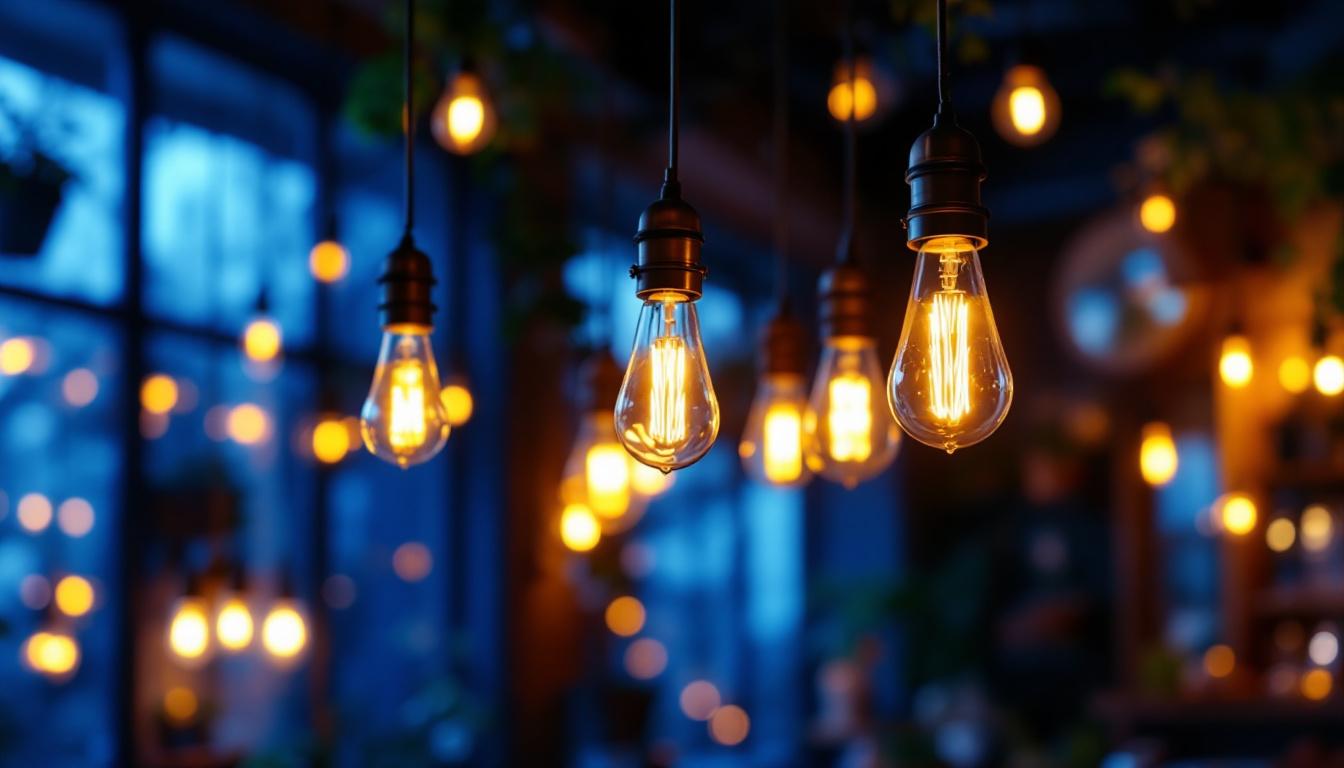
When it comes to lighting projects, especially those involving flush lighting ceilings, the stakes are high. The right lighting can transform a space, enhancing its aesthetic appeal and functionality. However, missteps in planning, design, or installation can lead to costly mistakes. This article aims to guide lighting contractors through essential considerations to avoid pitfalls in flush lighting ceiling projects.
Flush lighting refers to fixtures that are mounted directly against the ceiling, providing a clean and streamlined look. These fixtures are popular in both residential and commercial settings, as they maximize headroom and minimize visual clutter. However, the simplicity of flush lighting can sometimes lead to oversights during the planning and installation phases.
Choosing the right type of flush lighting is crucial. Options range from traditional flush mounts to more modern designs, including LED panels and recessed lighting. Each type has its own set of advantages and considerations, making it essential for contractors to understand the specific needs of their clients and the spaces involved. For instance, while traditional flush mounts may evoke a classic charm, modern LED options can offer a sleek, contemporary feel that aligns with current design trends. This understanding can significantly enhance the overall aesthetic and functionality of the space.
There are several types of flush lighting fixtures available, each suited for different applications. Traditional flush mounts are often used in residential settings, providing general illumination. On the other hand, recessed lighting offers a more discreet option, ideal for modern interiors where a minimalist aesthetic is desired. Additionally, some flush lighting fixtures are designed with adjustable features, allowing homeowners to direct light where it is most needed, which can be particularly beneficial in multi-functional spaces.
LED flush lights are gaining popularity due to their energy efficiency and long lifespan. These fixtures can provide bright, even illumination while consuming less power than traditional incandescent bulbs. Furthermore, many LED options come with dimming capabilities, allowing users to adjust the brightness according to the mood or activity at hand. Understanding the differences between these options can help contractors make informed decisions that align with their clients’ preferences and budget, ensuring that the selected fixtures not only meet functional needs but also contribute to the overall ambiance of the space.
Flush lighting offers several advantages that make it a preferred choice for many contractors and clients. Firstly, its low profile design is perfect for spaces with low ceilings, ensuring that headroom is not compromised. Additionally, flush lighting can create a uniform light distribution, reducing shadows and enhancing visibility. This quality is especially important in areas where tasks are performed, such as kitchens or workspaces, where adequate lighting can significantly impact productivity and safety.
Moreover, flush lighting fixtures often come in various designs, allowing for customization to match the decor of any room. This versatility makes them suitable for diverse applications, from kitchens and bathrooms to offices and retail spaces. Some flush lighting designs even incorporate decorative elements, such as glass shades or intricate patterns, which can serve as focal points in a room. The ability to blend functionality with aesthetic appeal makes flush lighting an excellent choice for those looking to enhance their interiors without sacrificing style or practicality.
Even seasoned contractors can fall prey to common mistakes when executing lighting projects. Awareness of these pitfalls can help mitigate risks and ensure successful outcomes. Here are some frequent errors to avoid:
One of the most significant mistakes in lighting projects is inadequate planning. Failing to assess the space thoroughly can lead to improper fixture placement and insufficient lighting. Before installation, contractors should conduct a comprehensive evaluation of the area, considering factors such as room size, layout, and the intended use of the space.
Additionally, it is essential to involve clients in the planning process. Understanding their preferences, lifestyle, and how they intend to use the space can guide decisions about the type and placement of flush lighting fixtures. A collaborative approach ensures that the final result aligns with the client’s vision. Furthermore, utilizing tools such as lighting design software can help visualize the project and simulate different lighting scenarios, allowing for adjustments before any physical work begins. This foresight can save time and resources, ensuring a smoother execution of the project.
Another common mistake is neglecting the concept of lighting layers. Effective lighting design typically incorporates three layers: ambient, task, and accent. Flush lighting often serves as ambient lighting, providing general illumination. However, relying solely on this layer can result in a flat and uninviting atmosphere.
Contractors should consider integrating task lighting, such as under-cabinet lights in kitchens or reading lamps in living areas, to enhance functionality. Accent lighting can also be used to highlight architectural features or artwork, adding depth and interest to the overall design. Balancing these layers creates a more dynamic and visually appealing environment. Moreover, the choice of color temperature can significantly affect the ambiance; warmer tones can create a cozy feel, while cooler tones can energize a space. By thoughtfully selecting and layering different types of lighting, contractors can transform any area into a well-lit, inviting environment that meets both aesthetic and practical needs.
To avoid costly mistakes, lighting contractors should keep several key considerations in mind throughout the project lifecycle. These factors can significantly impact the quality and effectiveness of the final lighting design.
Choosing the right fixtures is paramount in any lighting project. Contractors should consider not only the aesthetic appeal of the flush lighting but also its functionality and efficiency. Energy-efficient options, such as LED fixtures, can provide long-term savings for clients while reducing their environmental footprint.
Additionally, the color temperature of the fixtures plays a crucial role in setting the mood of the space. Warmer tones create a cozy atmosphere, while cooler tones can enhance focus and productivity. Understanding the desired ambiance can guide fixture selection and placement.
Installation techniques can make or break a lighting project. Properly securing fixtures to the ceiling and ensuring that wiring is correctly installed is essential for safety and functionality. Contractors should adhere to local building codes and regulations, as well as manufacturer guidelines, to avoid potential issues down the line.
Moreover, taking the time to test fixtures before finalizing the installation can prevent surprises. Ensuring that the lighting meets the client’s expectations in terms of brightness and coverage is crucial for client satisfaction.
Each space presents unique challenges and opportunities when it comes to lighting design. Understanding how to tailor flush lighting solutions to different environments can enhance the overall effectiveness of the project.
In residential settings, flush lighting can serve multiple purposes, from providing general illumination to creating a warm and inviting atmosphere. In living rooms and bedrooms, it is essential to balance flush lighting with other lighting layers, such as floor lamps or wall sconces, to create a comfortable ambiance.
In kitchens, flush lighting can be strategically placed to illuminate work areas, while also considering the need for task lighting under cabinets. Bathrooms benefit from flush lighting that offers bright, even illumination, ensuring safety and functionality.
Commercial spaces often require a different approach to lighting design. Here, flush lighting should focus on functionality and efficiency, catering to the specific needs of the business. For instance, retail environments may benefit from accent lighting to highlight products, while office spaces require a balance of ambient and task lighting to support productivity.
Moreover, energy efficiency is a significant consideration in commercial lighting projects. Using LED fixtures can help businesses reduce energy costs while maintaining a well-lit environment. Understanding the specific requirements of commercial clients can lead to successful lighting solutions that meet their objectives.
Flexibility is a critical aspect of any lighting project. As trends evolve and client needs change, the ability to adapt lighting designs can enhance long-term satisfaction. Contractors should consider incorporating adjustable fixtures or dimmer switches to provide clients with the option to modify lighting levels according to their preferences.
Future-proofing involves designing lighting systems that can adapt to changing technologies and client needs. This may include selecting fixtures that are compatible with smart home systems or integrating wiring that allows for easy upgrades. By considering future advancements, contractors can create lighting solutions that remain relevant and functional for years to come.
Educating clients about their lighting systems is another way to maintain flexibility. Providing guidance on how to operate and adjust fixtures can empower clients to make the most of their lighting. Additionally, discussing maintenance requirements and potential upgrades can ensure that clients feel confident in their investment.
Flush lighting ceilings can significantly enhance the aesthetic and functional qualities of a space. However, avoiding costly mistakes requires careful planning, attention to detail, and a thorough understanding of the unique needs of each project. By recognizing common pitfalls, considering key factors in design and installation, and maintaining flexibility, lighting contractors can deliver exceptional results that exceed client expectations.
Ultimately, successful flush lighting projects are a combination of artistry and technical expertise. By prioritizing collaboration with clients and staying informed about industry trends and technologies, contractors can position themselves as trusted experts in the field of lighting design.
Ready to elevate your lighting projects with fixtures that blend artistry, technical precision, and cost-efficiency? Look no further than LumenWholesale for an extensive selection of spec-grade lighting products at unbeatable wholesale prices. Say goodbye to middleman markups and hello to reliable, high-performance lighting that meets the highest industry standards. With free shipping on bulk orders, LumenWholesale is your go-to source for premium lighting solutions that promise quality, affordability, and convenience. Don’t compromise on your lighting design—choose Wholesale Lighting at the Best Value and make your next project shine.

Discover the ultimate lighting contractor checklist for 4 foot LED replacement bulbs.

Discover the transformative journey of fluorescent light bulbs, from their invention to their pivotal role in revolutionizing the lighting industry.

Discover the essential insights into gas lighting for indoor spaces with our comprehensive guide.

Discover essential tips for lighting contractors to create eye-friendly desktop environments.